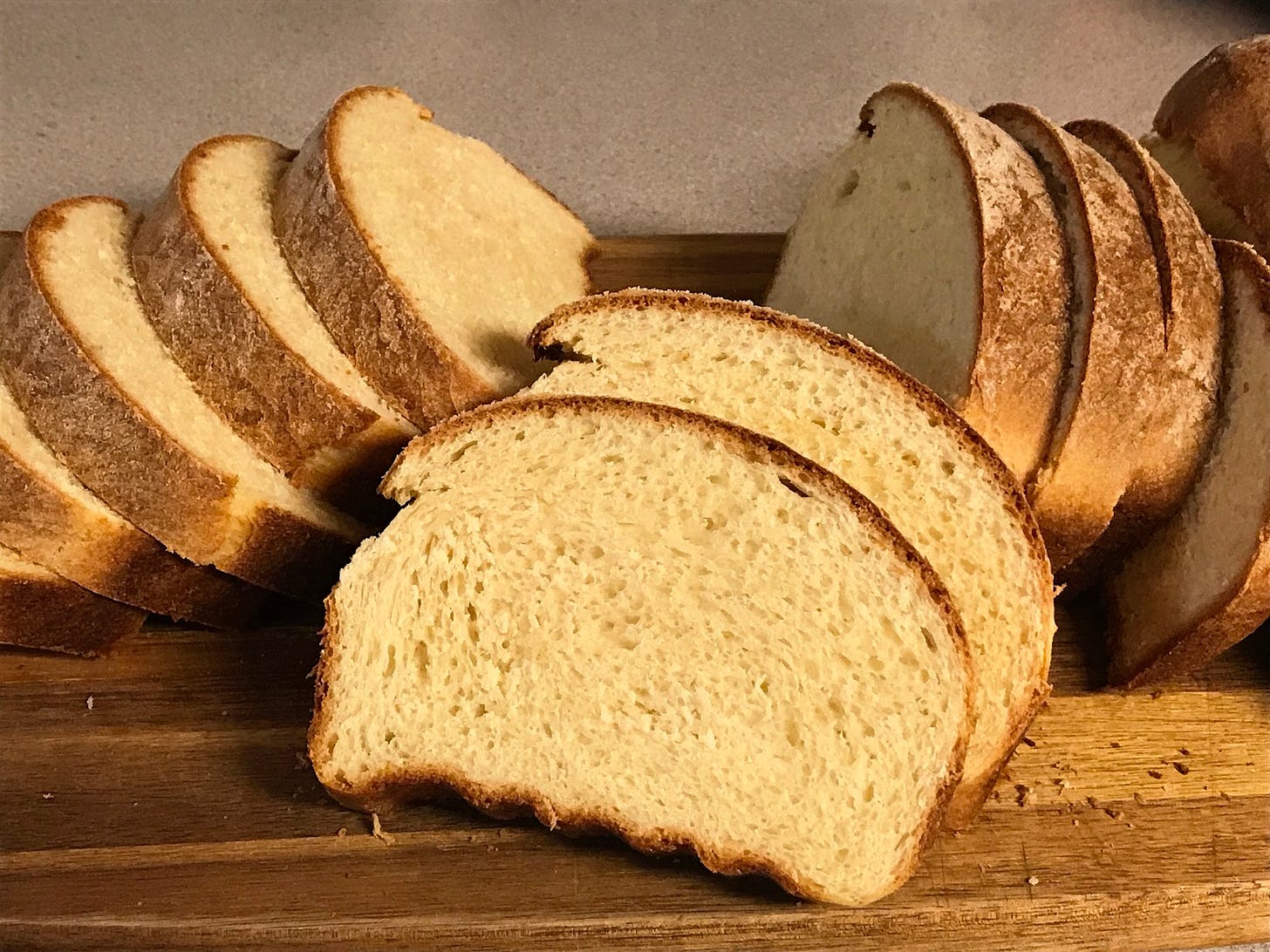The Brioche Formula
The First Reader and I were sitting and chatting the other day, planning for a Sunday morning breakfast with friends, which we would host. He wanted to serve pork chops and French toast. Oh, I said, I'll make up brioche for the French toast, it's so nice for it. Which led to to us talking about baking, and how I can wing it, and just do it by feel and gut after forty years of baking from scratch.
"I can't do that," he said, "I need very precise instructions."
So here, then, is the very precise method of making my brioche, which you can find in a different format and much less precision here with the Cheesecake Brioche loaf.

First, in your large mixing bowl (I use the bowl of my stand mixer) start with:
Sponge
160 g warmed milk (about 2/3 c)
14 g yeast (about 4 tsp)
2 large eggs which will be 120 g of egg, approximately
280 g of flour (about 2 c)
Mix the stiff batter completely and cover with a kitchen towel, allow to stand in a warm kitchen or proofing drawer about 30 minutes. Into the sponge, mix the following ingredients to create the dough.
Dough
120 g egg (roughly two large eggs)
75 g sugar (about 1/3 c)
280 g flour
Mix together until very stiff, elastic dough forms. Use your dough hook if you are working with a stand mixer. Then add by roughly 1 tbsp pats,
175 g room temperature butter (roughly 6 oz)
Allowing each pat to incorporate into the dough before adding another. The stand mixer will be a great help here, but you can knead it in by hand, having first turned it out onto a clean surface. The dough will become much softer by the time all of the butter has been added, and sticky. You can keep it from sticking to the surface and your hands by adding the flour, as below, which you would do as a separate step in the stand mixer.
For the final kneading, add another
140 g flour (about a cup)
a little at a time as the dough is kneaded for about ten minutes until smoothly elastic, springing back into shape when a fingertip is pressed into the dough ball.
Turn the dough ball into a large oiled bowl and allow to rise until doubled, which will take anywhere from 2-4 hours depending on how warm the kitchen is. For faster proofing, use the proofing drawer of your oven.
Finally, turn this out onto a lightly floured surface and divide the dough in half (a pastry blade will work well for this, or another knife). Form the dough into oblongs, tucking the edges all around on themselves and pinching them together firmly. Oil or butter two loaf pans if you want loaves for something like French Toast, and put the seam side of your oblongs on the bottom of the dough as you put the dough into the pans. Allow to rise for about another hour. This recipe will make two regular sized loaves of bread.
Preheat the oven to 400 degrees. Bake for about 30 minutes, keeping a close eye on the loaves for the last five to ten minutes as this sweet dough is easy to over-brown.
Remove from the oven and turn out of the pans, carefully, onto racks to cool. Bread will slice best, with nice clean edges, if allowed to cool to room temperature.





